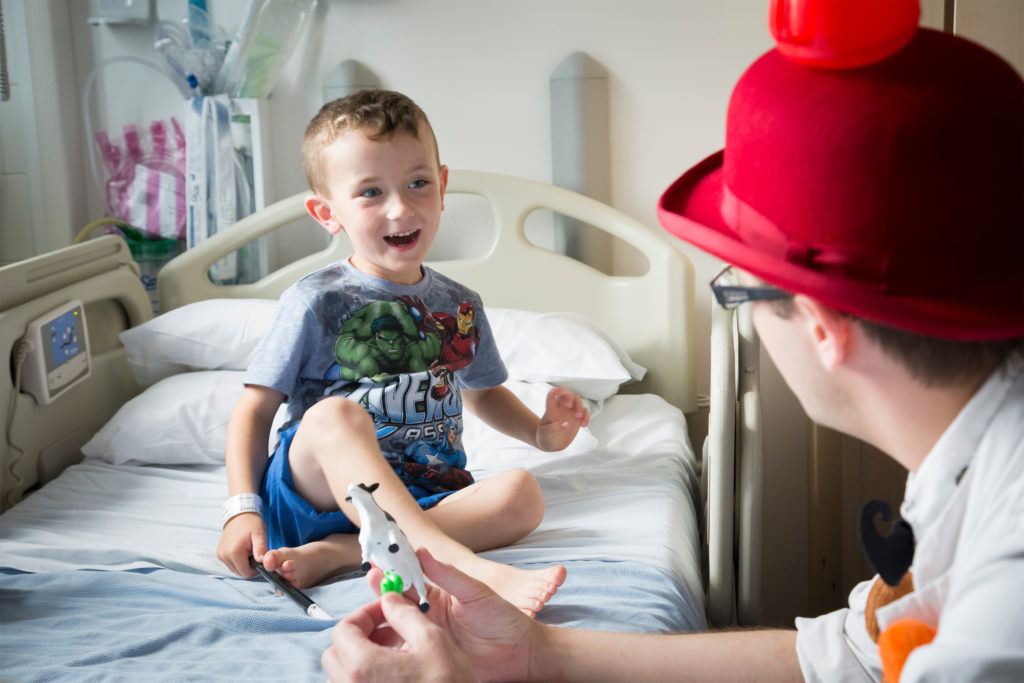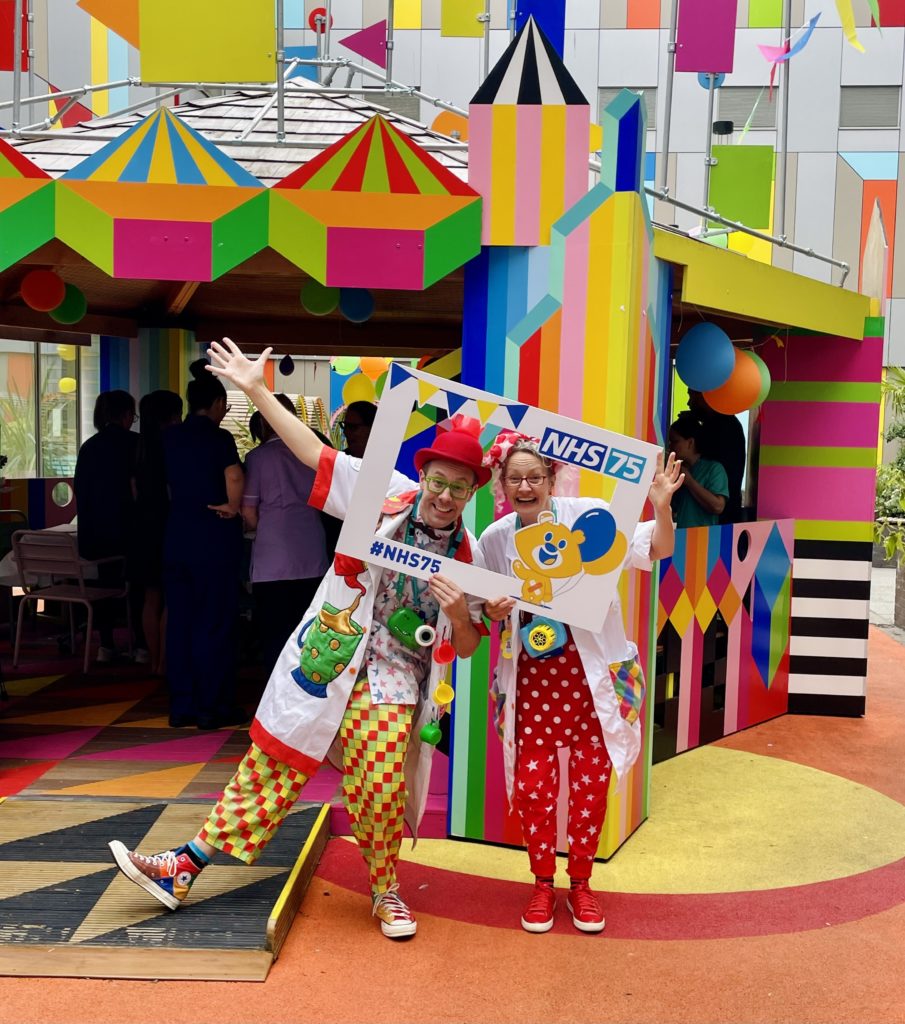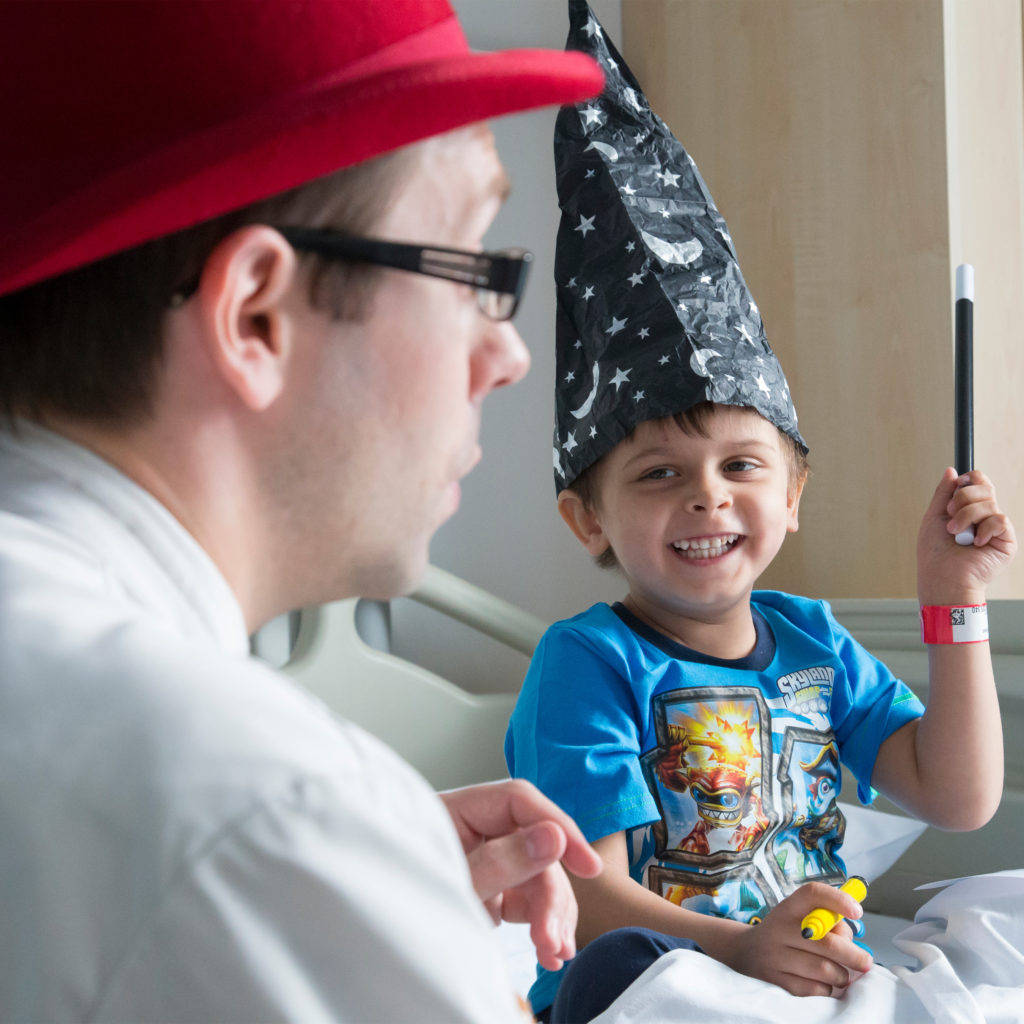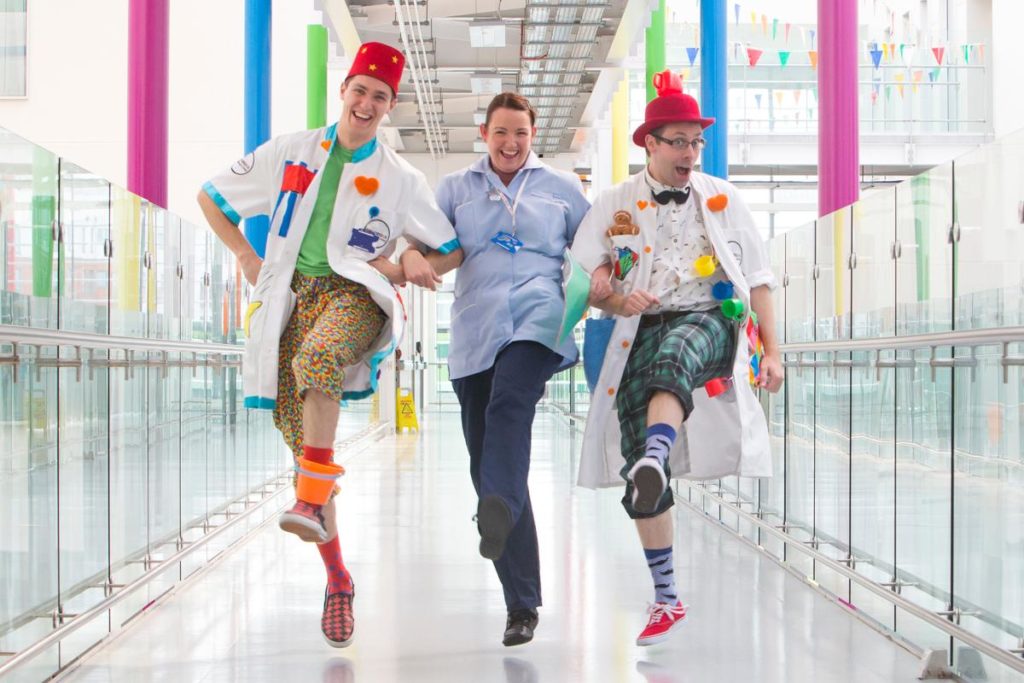29 February 2024
 Meet Dr Teapot
Meet Dr Teapot

How long have you been a Giggle Doctor and what first drew you to the role?
I’ve been a Giggle Doctor for over ten years, and I was first drawn to the role after seeing the 1999 film Patch Adams. I later got to meet and work with the real Dr Patch Adams in Morocco for two weeks, visiting hospitals, schools and orphanages.
The idea that I could use my skills as an actor and entertainer to bring about a real positive change really appealed to me. It is, quite simply, the best job in the world. You might say it’s just my…cup of tea!
Why do you think play matters in hospital?
Play in hospitals lets children be children, even where they’re in a strange clinical environment away from home. It allows them to focus on something other than the pain and worry of a hospital stay, and to do what children do best…play!
Play has transformed so many situations – whether it’s creating a silly story from the toys around a child’s bed, or a whole imaginary world we can fly off to. Play is at the very centre of what we do, it is always child-led and always age appropriate.

One of the ways play can be most effective is on Day Surgery wards when a child is waiting for an operation. There was a young boy once who was clearly very anxious and upset at the thought of surgery. We created a game with his dinosaurs on his bed making all the wrong noises, and he was able to correct me – which was empowering for him. I’d mispronounce their names and he would correct me too.
Soon, the dinosaurs began laying eggs (through some sleight of hand) and the eggs kept multiplying which the boy found hilarious. Moments later, the surgeon arrived to take him down to theatre, and he was still giggling away. Had he not experienced this moment, I have no doubt his anxiety would’ve increased as surgery drew nearer but, through the play, there was a roar-some transformation. His parents seemed so grateful too.

What is the change you most often notice in the children you visit from the moment you arrive to when you leave?
Giggle Doctor visits often create a very noticeable lift in mood. When we arrive, we can often sense the feelings of worry, or even just boredom from being in hospital so long. Through our specialist skills and training, we can transform the atmosphere and bring a real feeling of joy and fun to the wards.
We see physical changes too. Often a nurse will comment that a patient’s vitals have improved during a visit, heart rate has lowered and their willingness to undergo a procedure has increased.

Patients and families often seem surprised about the sheer scale of the impact we can have, and it’s lovely to hear the excited chatter and giggles continue when we leave.
A Giggle Doctor visit can often be the catalyst to start parents and children communicating with each other too. We may arrive to silent waiting rooms where nobody is talking to each other, but the shared play creates an opportunity for chat and discussion. It’s not very often that people meet a Giggle Doctor (although I wish it was!) and so it’s a real talking point.
Just this year, you’ve personally visited around 1000 children. How do you feel, knowing that you’ve made a difference to so many young people during an incredibly challenging time in their lives?
It’s incredibly rewarding to think about the impact these visits have, not just there and then, but also the prolonged effects of a Giggle Doctor visit. I often see children and families many times, and hear things like ‘Oh, they haven’t stopped talking about when they last saw you…’ which is incredibly humbling.
A child’s face lighting up when they see you again is a very special kind of magic. They might request a particular trick or bit of silliness again, and it’s lovely to build on previous visits. With pockets full of silly props and toys, and a brain full of imagination (and jokes!) we’re never short of ways to create giggles.

Help Dr Teapot bring magical moments to more children in hospital
Donate